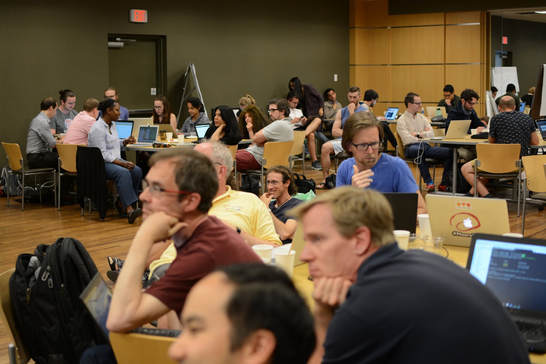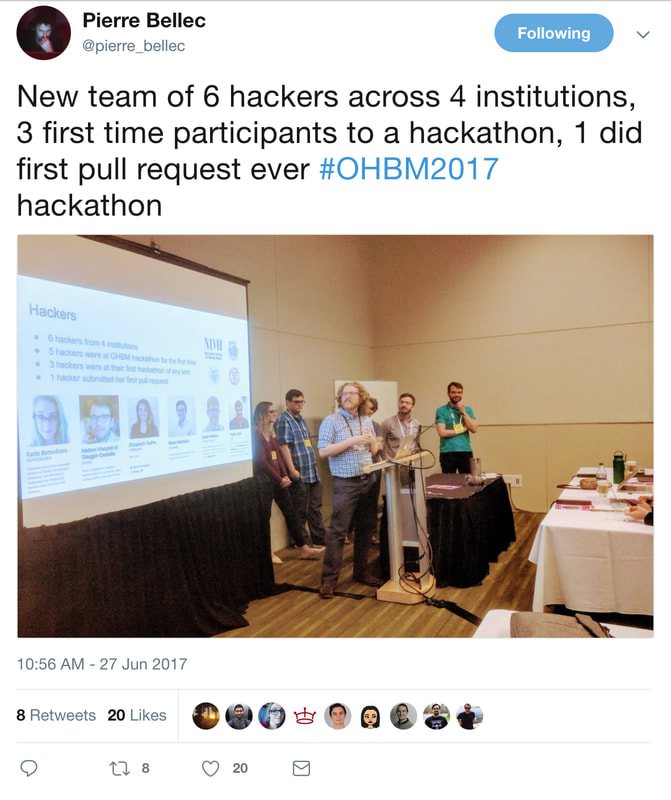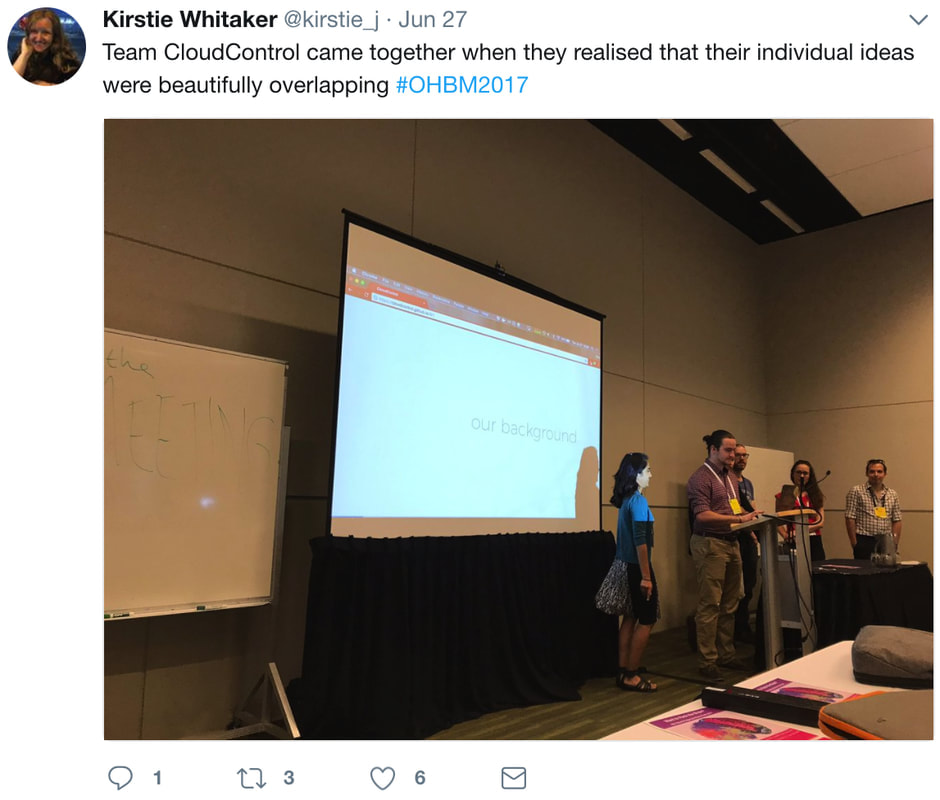|
by Agâh Karakuzu The 5th OHBM Hackathon was an official component of the 23rd Annual Meeting of the OHBM held in Vancouver, June 25-30th 2017, with support from two leading open science institutions: the McGill Centre for Integrative Neuroscience, and the Stanford Center for Reproducible Neuroscience. Imagine entering a room full of people with flashy stickers on the back of their laptops. Gathering around tables, they stare at screens full of code, colorful text on a black background reminiscent of the code rain from the Matrix trilogy. Welcome to the control room of computational neuroscience! There is a reason why we call these neuroscientists ‘hackers’: they are hacking to provide their colleagues with accessible and powerful computational methods, or whatever means necessary, to crack the brain code. While trying to wrap my head around a way to explain the hackathon concept, I received an email by the Free Software Foundation. It was an article by Richard Matthew Stallman (‘rms’, considered by many to be the founding father of free software), explaining why hackathons should insist on developing free software. Such a lucky coincidence! Its opening lines were an eloquent description of the core mandate of hackathons: “Hackathons are an accepted method of giving community support to digital development projects. The community invites developers to join an event which offers an encouraging atmosphere, some useful resources, and the opportunity to work on useful projects.” OHBM Hackathons are organized by the OHBM Open Science Special Interest Group (SIG), to achieve open sharing of ideas, data and tools between members of the OHBM community. In line with this mission, most projects in the hackathon aimed to improve analyses using free software libraries, releasing computational tools from the grip of proprietary software. For example, the AFNI Love project team built some of the most complex tools for Analysis of Functional Neuroimaging (AFNI) into nipype, an open-source Python project that aims to piece together algorithms from different packages into a single processing workflow. Managing to complete the project in only three days, this team demonstrated how the hackathon could bring people together to create useful new software, while also creating networking opportunities to connect novice and more experienced hackers, and planting the seeds of long-term, more ambitious projects. This is well summarized in the following tweet by Pierre Bellec, the chair of the OHBM Open Science SIG: Pierre Bellec has put his heart and soul into the hackathon for years, and this dedication has clearly paid off. In discussing this year’s hackathon he told me: “Vancouver, that was beyond anything I’ve seen so far. Because, there, the hackathon had matured and taken on a life of its own. I feel like the previous hackathons were more like experiments, a recipe in the making. This time around the community jumped right in, everybody knew their part and seamlessly integrated the new members. By the end of the event, there was no telling the newcomers from the veterans.” Indeed, the level of productivity and communication in Vancouver was off the charts. After talking to Pierre, I spotted my friend Gregory Kiar, whom I first met at the hackathon. The most exciting thing to him was that so many new people were coming into the hackathon and, in a short period of time, achieving something remarkable. He mentioned how five projects were merged into one, as captured by another member of the hackathon organizing committee, Kirstie Whitaker: The OHBM hackathon is designed to encourage collaboration and sharing of knowledge, rather than competition. This drives productivity and enables people to learn and develop quickly. During three days of hacking, the teams worked hard to develop software that could make computational neuroscientists’ lives easier. Most importantly, several small and somewhat redundant individual projects will merge into an open source collaborative effort, with much higher chance of long term success and reaching high code quality. For instance, Mindcontrol, Abide, Deep-qc, Clowder and Freesurfer teams united their considerable hacking prowess under one banner: Clowdcontrol. This new user friendly web platform can run demanding “deep learning” analyses in large and distributed networks of computers - the metaphorical cloud. The PyNets project team developed a Python toolbox that automates functional and diffusion-weighted MRI network analysis. By leveraging existing open source tools, they were able to assemble an impressive array of methods, that has kept growing since.
To conclude, the hackathon served to pull together researchers from different institutions as a team while being open to add new members and committing themselves to push the limits of productivity during the event. While the previous sentence was sprinkled with GitHub jargon, the good news is that even if none of these commands ring a bell with you, you are always more than welcome to participate in the Hackathon. As long as you don’t let the jargon intimidate you, the Hackathon will help you gain useful skills on the fly, make new connections and broaden your academic horizon. As one of the participants noted during the wrap-up, the OHBM hackathon is helping to put back the collaboration and the fun at the heart of science, right where it belongs. Hope to see you at the OHBM Hackathon 2018 in Singapore!
0 Comments
Your comment will be posted after it is approved.
Leave a Reply. |
BLOG HOME
Archives
January 2024
|




 RSS Feed
RSS Feed